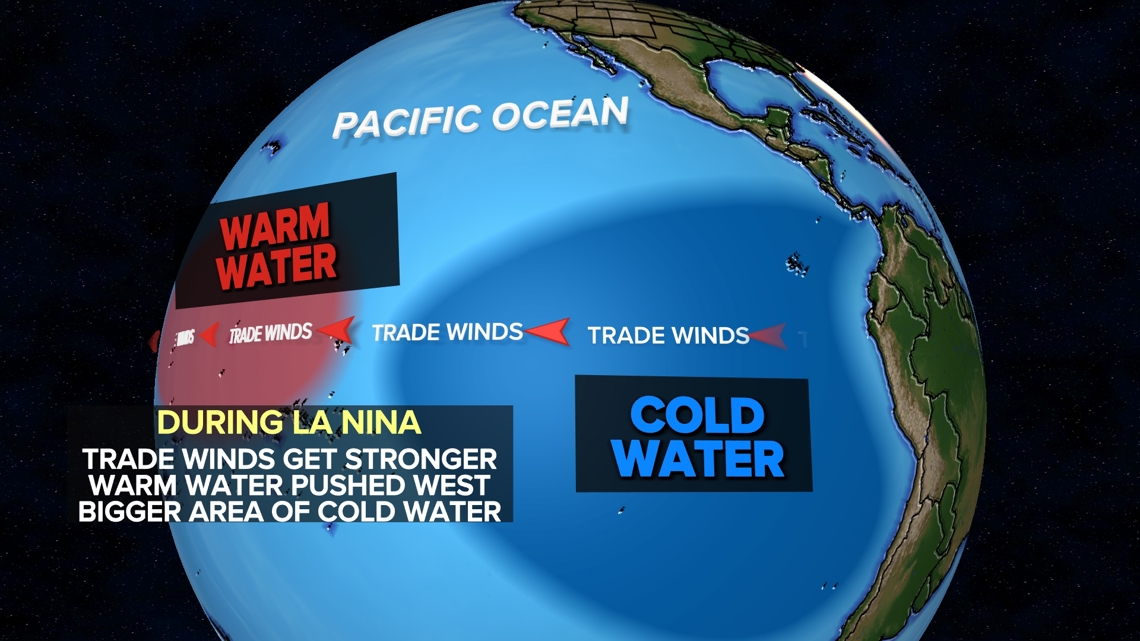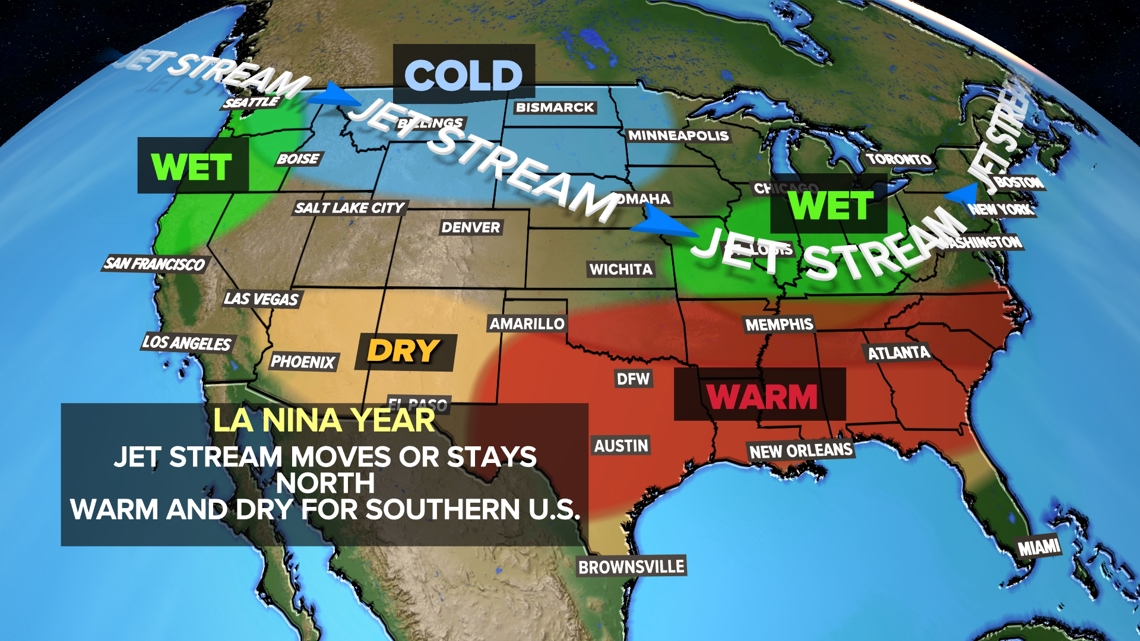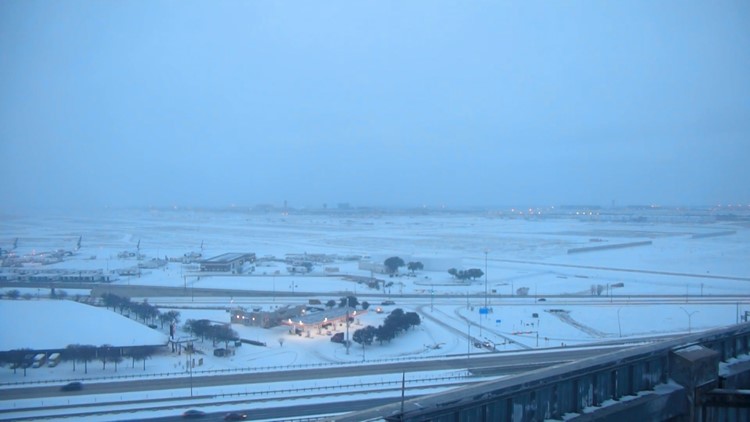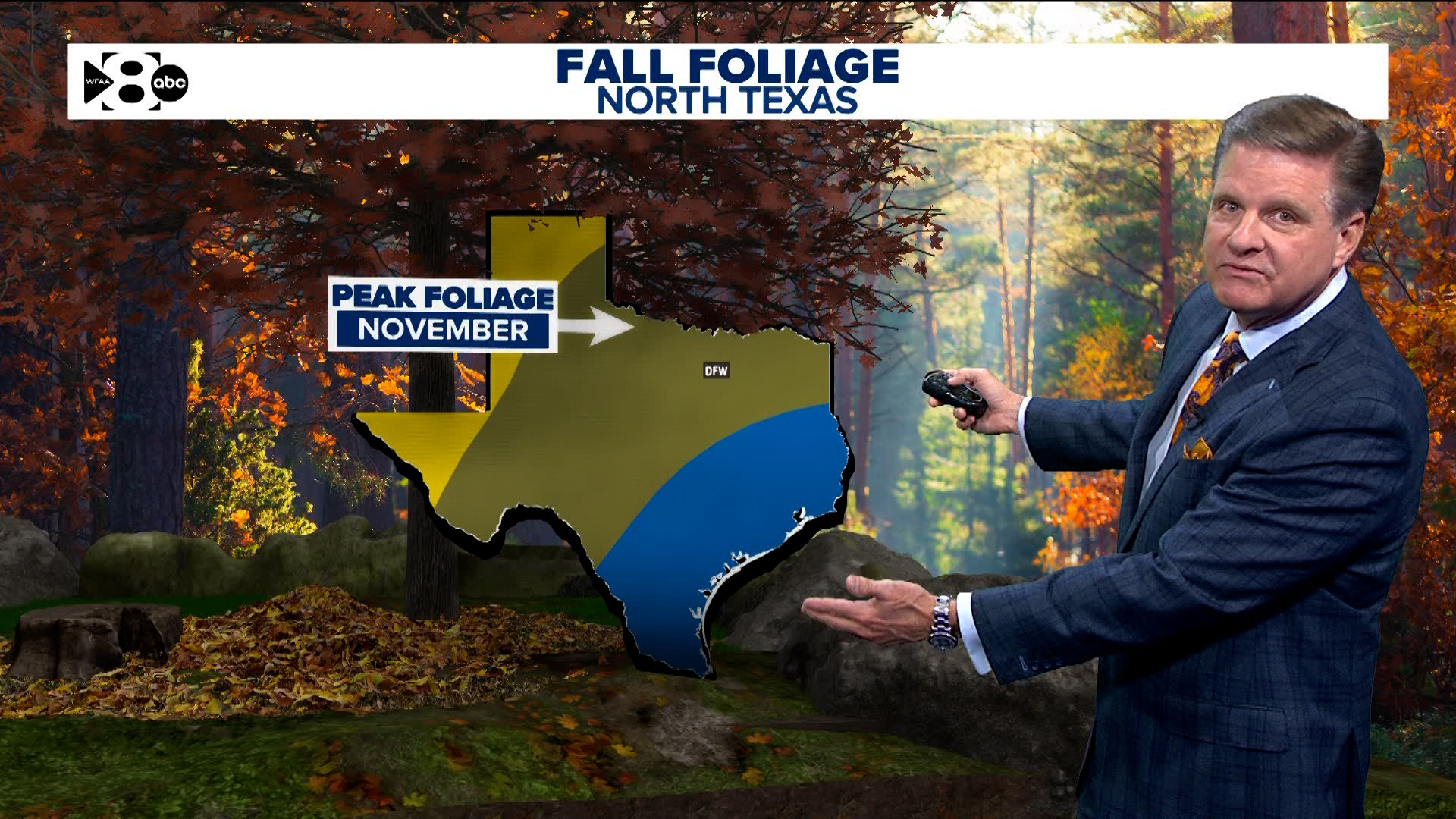DALLAS — As winter approaches, it's time to discuss the implications of this year’s highly likely La Niña and what it usually means for North Texas winters.
What is La Niña?
La Niña is characterized by cooler-than-average sea surface temperatures in the central and eastern Pacific Ocean.


This can have a significant influence on weather patterns across the United States. La Niña is part of a broader climate pattern known as El Niño-Southern Oscillation (ENSO), which includes both its counterpart, El Niño, and neutral phases. During La Niña, trade winds strengthen, pushing warmer water towards the western Pacific and leaving cooler water behind in the eastern Pacific. This shift significantly alters atmospheric circulation patterns, leading to distinct weather outcomes for various regions, including right here in North Texas.
What does it mean for our winter?
These shifts usually bring an overall drier and warmer than normal winter for North Texas. And that's exactly what we expect this year. Does this mean it will never snow, ice or be brutally cold at times? NO. It just means when we look back at the winter months and average all the precipitation and temperature numbers we expect a rainfall deficit and warmer than normal averages.
Let's talk nerdy
The cooling of ocean waters during La Niña affects the jet stream, which can lead to a more stable atmosphere over North Texas. This stability often results in fewer disturbances that could bring moisture and precipitation to the region. La Niña typically alters the track of winter storms, pushing them northward and away from Texas. This means that while areas to the north may experience significant snowfall and rain, North Texas could remain largely dry. The phenomenon often leads to a stronger high-pressure system over the southern United States. This system can inhibit cloud formation and precipitation, resulting in warmer and drier conditions.


While La Niña typically brings milder, drier winters to North Texas, the unpredictability of weather patterns means there will be fluctuations. That's how the crazy Texas weather operates.



